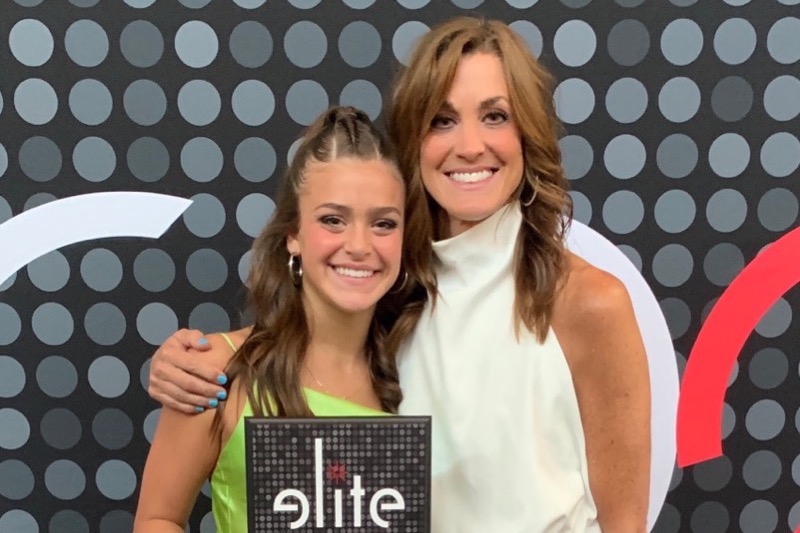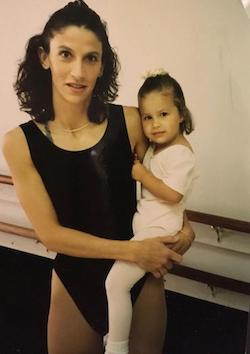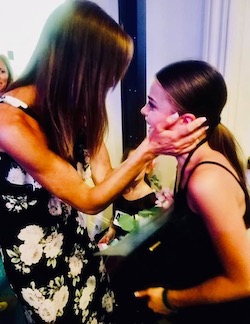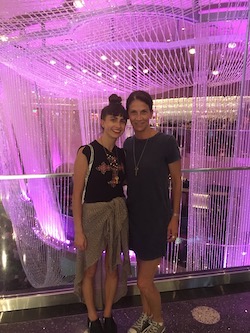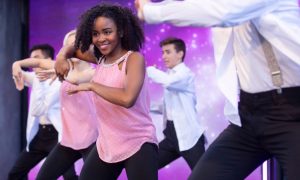The bond between a parent and their child is special. One of the joys of being a parent is being able to share your passion with your offspring. But what happens when your passion is also your business, and your child is also your student?
Playing both roles can be very difficult to balance, and Dance Informa recently spoke with three studio owners on their experience teaching their daughters.
Lori South is the owner and director of Creative DanceN’ in South Bend, IN, and had the opportunity to teach her daughter Ashleigh from age six to age 18, as well as daughter Elisabeth from age four to age 20.
Patty Pawlowski is the owner of Steppin’ Out Dance Academy in West Seneca, NY, and signed her daughter, Ally, up at her studio at age two-and-a-half. Although Ally tried gymnastics instead of dance for ages four through six, she returned to the dance studio and trained there until she graduated from high school. Patty‘s son, Billy, also danced for a short period of time at her studio.
Jamie Cordon is the owner of Jamie’s Dance Force in Youngstown, OH. Her daughter, Kendal, started at the studio at age four and has been in Jamie’s classes since age five.
Finding the balance
When dance is what you do for work and for your activity, it can be hard to simply not talk dance at home.
“While at home, we discussed dance just as we would any other activity or school function she participated in, so in that respect there was no reason to keep it separate,” Patty says.
“I also had friends outside of my dance friends,” Ally adds. “When my mom would do studio work from home, I was able to remove myself in order for it to not feel like I was always at the studio. And as any mother and daughter, we would occasionally get upset with each other, but it was never brought into the studio.”
“Once we walked into the studio, it was a clean slate,” Patty continues. “The issues from home were dealt with when we returned home.”
Having dancers at home allowed for an additional set of hands when it came to coming up with event plans or choreography for Creative DanceN’.
“I used [my daughters] to help prepare for competitions, shows and anything else that needed to be done,” Lori shares. “They watched the highs and lows [of owning a studio] at home, mixed with the enjoyment of teaching and the satisfaction of watching my students achieve their goals.”
Celebrating other family members
With both the parent and the child going to the studio for several hours a week, it is important to find non-dance-related family time.
“My husband and I have two boys who also kept busy with their sports, so we are on the go a lot with them as well,” Jamie shares. “We have a lot of events that we are involved with other than dance and the studio that has always kept our home life separate from studio life.”
Although Patty’s husband is also very involved at the studio as the co-owner, he was at home with the children while Patty was teaching. “He was always there making dinners, attending school functions, reading them stories and putting them to bed,” she explains. “He has never stopped supporting me throughout the past 33 years. When things got tough financially or otherwise, he always stayed by my side. I feel blessed and am thankful for my family allowing me to do what I love to do all these years, for understanding the time and attention my work demands and for sharing me with my dance family. I’m sure it’s not easy being a spouse or child of a dance studio owner.”
Friends become family
When your child is also your student, their classmates become their friends. This means it becomes common to have your students and dance parents over at your home and vice versa.
“I really enjoy teaching my daughter’s friends,” Jamie says. “It helps me keep engaged with them and to know what is happening personally and socially with them all. It’s fun to see them all enjoy an activity together where they will have memories both from their high school days and studio days together.”
Jamie also appreciates having the opportunity to be there for her students, especially the teenagers, when the world we live in gets complicated. “Today’s world for teenagers is so complicated that sometimes me stopping and talking with them for 15 minutes will be far more valuable and is than any dance step I can teach them in that same 15-minute period.”
For Lori, when her husband was deployed, the other families at the studio took her daughters in as their own. “The families took them under their wings and helped raise them,” she says.
It can be hard…but it can be beautiful!
Being together often can be difficult, whether it’s keeping your family disagreements in check, wondering if you’re “over-praising” your children, or wanting to give your child a hug when there’s “tough love” moments.
As a student, Ally felt it was hard learning how to let it go when her peers were upset they weren’t placed in front in choreography or selected to be in a special routine.
“No one ever said anything bad about my mom, but sometimes children get upset or react in ways that aren’t the nicest,” Ally says. “It was hard for me to be able to let that go and not want to lash out or respond to another child in the way of protecting my mom.”
But with every difficult moment comes beautiful memories, like spending quality time with their child at competitions and conventions, and the journey of watching their own children grow into beautiful dancers. It’s just as special for the child as they grow up and see how much work their parent(s) put into their business.
“The best part about being at the studio with my mom was being able to see how many lives she would impact on a day-to-day basis. It is something that still amazes me to this very day,” Ally shares. “As I matured, I was able to see how much my mom cared about the atmosphere she created within the dance studio. The family-oriented atmosphere was definitely a reflection of the kind of relationships we had together as a family. My dad being around often just added on to that even more.”
Advice for others with studio owner/child dancer relationships
“Always remember to go home at the end of the day and be at home,” Ally says. “I think it is important with any situation similar to ours to be able to create a boundary between studio life and home life. My advice of being the child in the situation is to consider yourself just another student in the classroom and see the teacher as the teacher, not as your mom being the teacher.”
“Allow [your child] to learn and grow at their own pace,” Patty advises. “Let them experience class, competitions, conventions and auditions as all the other dancers in your class do without them feeling pressured or pushed into things because you expect so much from them. Allow them to thrive on their own!”
Lori’s advice is to not let the fear of offending your clients take away from raising your children. “You only get them for a short time and when they need you, be there! Don’t hold back accolades because they are yours.”
Life after the studio
After your child graduates from high school, it’s time for them to enter into adulthood. Some children will carry on with your shared passion of dance. Others will take the lessons they learned from dance with them into a different career path.
For Lori, her daughters have full lives of their own. Ashleigh works for a medical device company as a liaison between hospitals and the company, but continued with dance by teaching and taking classes. Elisabeth is a mom herself now, raising a two-year-old daughter with one on the way while also managing a hair and nail salon.
Patty and Ally still share their love for dance to this day. Ally now dances professionally in Los Angeles, but returns home several times a year. Many of her visits include teaching workshops and choreography at her family’s studio.
“I encouraged my daughter to always dance to her best ability, to go out of her comfort zone and be open to trying new styles so that she would be a well-rounded dancer and to know her own weaknesses and strengths,” Patty shares.
She feels Ally’s training allowed her to prosper as she entered adulthood. “Everything she accomplished as a student while at the studio and now as an adult in the dance world she can proudly say she accomplished genuinely on her own and not because her mom knew someone. I could only take credit for giving her the same quality training, experiences, love and support that all the other dancers on her team got. Where she is today is truly because of all the hard work and effort she put in on her own and what a sense of accomplishment that is for her!”
By Lauren Kirchmyer of Dance Informa.


